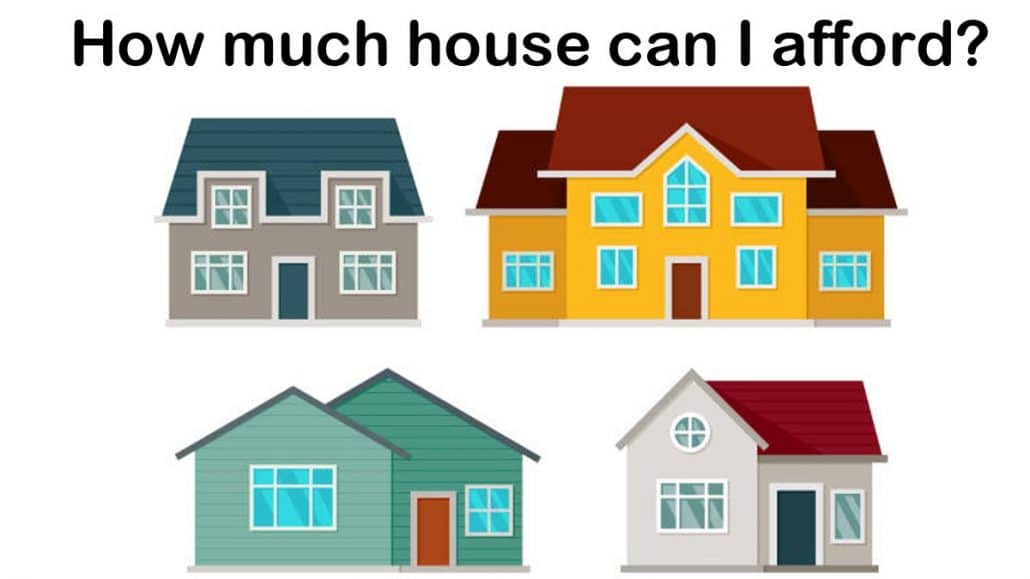Questions like “How much house can I afford?” or “How much mortgage payment can I afford?” pop up in the minds of millions of people when acquiring a new home in another place. However, we have what we call an afford calculator or affordability calculator that helps you calculate the expenses of purchasing a new home. To calculate how much house you’re able to afford, there is certain information that helps you in determining that. This includes household income, monthly debt, and the amount of savings you have for a down payment.

Every home buyer wants to have rest of mind or comfortability in understanding his/her monthly mortgage payments. Even when your household income and regular monthly debt might look good, there are certain unexpected expenses or emergency spending that might come up which can affect your savings. This is why you need a good affordability home. This will enable you to be able to clear off your mortgage payment income if an emergency comes up.
What is My Home Affordability?
Several factors determine your home affordability, including your income, debts, down payment, credit score, and the current interest rates. Lenders typically use a debt-to-income ratio (DTI) to assess your affordability. A common guideline is the 28/36 rule, where your housing costs (including mortgage principal, interest, property taxes, and insurance) should not exceed 28% of your gross monthly income, and your total debt (including housing costs plus other debts like car loans or credit cards) should not exceed 36%.
To get a more personalized estimate, you can use online affordability calculators available on various financial websites. These calculators usually ask for information like your income, debts, down payment, and desired loan terms to give you an estimate of how much you can afford. However, keep in mind that these are just estimates, and it’s best to consult with a mortgage lender to get pre-approved for a loan, which will give you a more accurate picture of your affordability.
How does your debt-to-income ratio impact affordability?
Banks make use of an important metric known as DTI (debt-to-income) ratio in others to estimate the amount of loan you can borrow. The comparison will include your total monthly debts like your mortgage payments. This will involve your insurance and property tax payment to your monthly pre-tax income.
In the meantime, your credit score is one of the factors that can affect how much you can borrow or qualify for a higher ratio. In general, housing expenses can not take more than 28% of your monthly income. For instance, a monthly mortgage payment that includes taxes and insurance is $1000/month, and a monthly income of $4000 does not include taxes. Then your DTI ratio will be 25% which is calculated as monthly mortgage payment divided by monthly income.
How much house can I afford calculator?
However, if you’re looking for a calculator that can help you to calculate how much home you can afford. The Wells Fargo home affordability calculator is one powerful tool to use in calculating how many houses you can afford. This will help to estimate the home price as well as the monthly mortgage payment. This will be determined by certain information you provide which includes income, monthly debt, down payment, and location. Other mortgage affordability calculator you can also try out includes NerdWallet and Bankrate.com.
If you are looking to buy investment properties, you can check out current mortgage rates here.
You must purchase a home that you can afford. The following tool will help you to understand how much mortgage can you afford based on the location you provide.
How to Determine How Much House I Can Afford
Determining how much house you can afford involves several key factors:
1. Income and Expenses:
- Gross Monthly Income: This is your total income before taxes and deductions.
- Monthly Expenses: List all your regular expenses, including:
- Housing costs (rent, utilities)
- Debt payments (car loans, student loans, credit cards)
- Living expenses (food, transportation, entertainment)
- Net Monthly Income: Subtract your monthly expenses from your gross monthly income. This is the money you have left for housing costs.
2. Debt-to-Income Ratio (DTI):
- Calculate your DTI: Divide your total monthly debt payments by your gross monthly income.
- Lender’s Perspective: Lenders prefer a DTI of 36% or lower. This indicates you have a manageable amount of debt compared to your income.
3. Credit Score:
- Importance: A good credit score (typically 620 or higher) qualifies you for lower interest rates, which significantly impacts your affordability.
- Check your credit report: Review your credit report for any errors and address them.
4. Down Payment:
- Amount: The larger your down payment, the smaller your loan amount and monthly payments.
- Typical Requirement: Many lenders prefer a 20% down payment, but some offer loans with lower down payment options.
5. Mortgage Terms:
- Loan Term: The length of your mortgage (e.g., 15 years, 30 years) affects your monthly payments. Shorter terms have higher monthly payments but lower overall interest paid.
- Interest Rate: This is a crucial factor. Even small differences in interest rates can significantly impact your affordability.
6. Other Factors:
- Property Taxes: These are recurring annual expenses.
- Homeowners Insurance: This protects your property and is typically required by lenders.
- Private Mortgage Insurance (PMI): If your down payment is less than 20%, you’ll likely need PMI, which adds to your monthly costs.
- Closing Costs: These are one-time fees paid at the closing of your home purchase.
Factors to Consider
- Income: Your income is the foundation of your affordability. Consider your gross monthly income (before taxes) and any stable additional income sources.
- Debt-to-Income Ratio (DTI): This ratio compares your monthly debt payments (including future mortgage payments) to your gross monthly income. Lenders typically prefer a DTI below 36%, but stricter guidelines may apply.
- Down Payment: A larger down payment means a smaller mortgage loan and lower monthly payments. Aim for at least 20% of the purchase price to avoid Private Mortgage Insurance (PMI).
- Closing Costs: These additional upfront fees can range from 2-5% of the loan amount. Factor them into your budget to avoid financial strain.
- Monthly Expenses: Consider all your recurring expenses like utilities, groceries, transportation, and other debts. Ensure your mortgage payment doesn’t leave you financially stretched.
Calculating Your Affordability
While online calculators can provide estimates, understanding the underlying calculations is essential. Here’s a simplified approach:
- Calculate Your Gross Monthly Income: This is your total income before taxes and other deductions.
- Determine Your Debt-to-Income (DTI) Limit: Aim for a DTI of 43% or lower. Multiply your gross monthly income by 0.43 to calculate your maximum allowable debt, including a future mortgage.
- Estimate Your Potential Mortgage Payment: Use a mortgage calculator or consult with a lender to estimate your monthly mortgage payment based on the current interest rates, loan term (e.g., 30 years), and potential down payment. This should include principal, interest, property taxes, and homeowners insurance (often called PITI).
- Factor in Other Housing Costs: Add estimated HOA fees (if applicable), utilities, and a buffer for maintenance and repairs to your estimated mortgage payment.
- Compare Total Housing Costs to Your DTI Limit: Ensure your total estimated housing costs (including the items from step 4) are within your DTI limit calculated in step 2.
- Adjust Your Expectations: If your initial calculations show you can’t afford as much as you hoped, consider adjusting your criteria. This might involve looking at less expensive homes, increasing your down payment, or working to lower your DTI.
Additional Considerations
- Location: Housing costs vary significantly depending on location. Consider your desired neighborhood and its impact on your budget.
- Lifestyle: Do you prioritize home size or proximity to amenities? Balancing your needs with your budget is crucial.
- Future Plans: Consider future changes like family growth or career advancement when assessing your long-term affordability.
Working with a Mortgage Lender
Getting pre-approved for a mortgage is a critical step. A lender will review your financial information and provide a pre-approval letter stating how much they’re willing to lend you. This letter is a powerful tool when making an offer on a home.
Tips for Improving Affordability
- Improve Your Credit Score: A higher credit score unlocks lower interest rates.
- Reduce Debt: Pay down existing debt to lower your DTI.
- Save for a Larger Down Payment: A larger down payment reduces your loan amount and can help you avoid PMI.
- Shop Around for Mortgages: Compare offers from different lenders to find the best interest rates and terms.
- Consider a Longer Loan Term: While this may mean paying more interest over the life of the loan, it does reduce the monthly payments, making it potentially more affordable.
- Create a Realistic Budget: Factor in all housing expenses and other financial goals.
Frequently Asked Questions (FAQs)
What is the 28/36 rule?
The 28/36 rule is a guideline that suggests spending no more than 28% of your gross monthly income on housing costs (PITI) and no more than 36% of your gross monthly income on total debt (including housing costs).
How much should I put down on a house?
The ideal down payment depends on your financial situation. While 20% is often recommended to avoid PMI, you may be able to put down less, especially with certain loan programs. However, a smaller down payment means a larger loan amount and potentially higher monthly payments.
What is PMI?
Private Mortgage Insurance (PMI) is an insurance policy that protects the lender if you default on your mortgage. It’s typically required if your down payment is less than 20%.
How do I improve my credit score?
Improving your credit score involves paying your bills on time, keeping your credit utilization low (below 30% of your available credit), and correcting any errors on your credit report.
Can I afford a house if I have student loan debt?
Yes, but your student loan debt will be factored into your DTI. Lenders will consider your overall debt burden when assessing your affordability.
Should I get pre-approved for a mortgage before looking at houses?
Absolutely. Getting pre-approved gives you a clear understanding of how much you can borrow and strengthens your position when making an offer on a home.
What are closing costs?
Closing costs are fees associated with the purchase of a home, including lender fees, appraisal fees, title insurance, and taxes.
Conclusion
Determining how much house you can afford is a crucial first step in the home-buying process. By carefully considering the factors discussed in this guide, calculating your affordability, and working with a mortgage professional, you can make informed decisions and confidently embark on your journey to homeownership.

